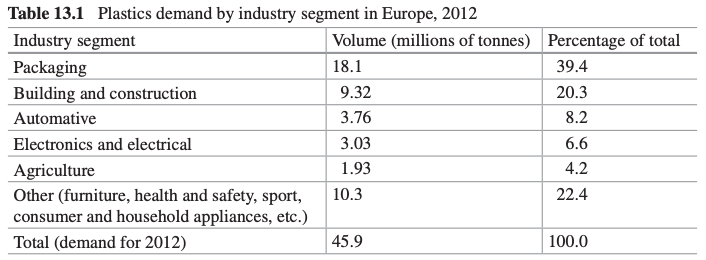Type of Publication: Summary of Research
Source: Marine Anthropogenic Litter (Book); Chapter 13
Author: Tamra S. Galloway
Summary
This paper is a review and summary of studies up to year 2015 about what research shows about micro and nano plastics and how they impact human health.
As stated in the introduction:
“This review considers the kinds of plastics in widespread, everyday use and the potential hazards they may cause. It reviews the routes of uptake of micro and nanoplastics into humans through the food chain and the potential consequences for human health.”
Main Topics Covered
- Types of plastics currently in widespread use
- How micro and nano-plastics get into the human body through the food chain
- The potential human health implications of micro and nano-plastics in our food chain
Part 1: Types of plastics currently in widespread use
This section provides a short overview of the volume and types of plastics used.
- Plastics are generally divided into two types:
- Thermoplastic – soften on heating and can be remolded (recyclable)
- Thermosetting – can not be re-softened and remolded (not recyclable)
- Packaging is the largest category for plastic use. It accounts for about 39% of total plastic production.
- Tables below show demand by types of plastics and amount recycles by type of plastic.
- Based on this data (Europe), very little plastic is recycled.
Tables:
Plastics demand by industry segment (13.1)

The 7 types of plastics (13.2)

Part 2: How micro and nano-plastics get into the human body through the food chain
There is some evidence showing humans are consuming micro and nano plastics (outside of this research summary).
There isn’t enough research to conclude whether or not plastic particles pass through the human gut and into the blood stream. Or whether or not these particles enter into other body tissues or are just secreted.
However, there is evidence that plastic additives enter into our bodies and can negatively impact human health. (See part 3 for details)
About Plastic Ingestion
Are we consuming micro and nanoplastics?
Micro and nano-plastics break down into smaller and smaller pieces in natural environments. They can find their way into our food and therefore into our bodies in many ways.
Micro and nano-plastics have the potential to enter our food. Preliminary studies have shown that humans have micro-plastics in their stool.
Does our body ingest micro-plastics or do they pass through?
There is currently no evidence (as of 2015) that micro-plastics are absorbed by humans.
Early studies suggest that some nano and microplastics can pass through the gut and into the blood stream, but it is not clear if they are cleared by the body or can accumulate.
There IS evidence that chemicals associated with plastics are consumed and impact human health.
Part 3: Potential human health implications
Plastics additives can migrate into food from containers. Chemical additives can be absorbed by the human body and enter into fluids and tissues. Several additives have been identified as harmful to human health and are regulated by various government bodies.
About Plastic Additives
Plastic polymers are the base molecules for plastic. They are “generally considered to be inert and of low concern to human health”.
Plastic additives are chemicals added to plastic polymers to give the final plastic product desired functionality. For example BPA is a common plastic additive used in some plastics to make it clear and strong.
While polymers are stable, additives can leach out of plastics into the surrounding environment (i.e. into your food from a container).
The amount and type of additives present in plastics range considerably from product to product. The diffusion of additives into foods also depends on various factors such as food type, temperature, and contact time.
This review also summarizes Bisphenol A (BPA) and human health:
- BPA is one of the most well-known chemical additive associated with plastics.
- It was first synthesized as a synthetic estrogen
- It is now used in various plastic products
- BPA can leach into food and water from plastic containers
- BPA is absorbed by the body into the blood stream
